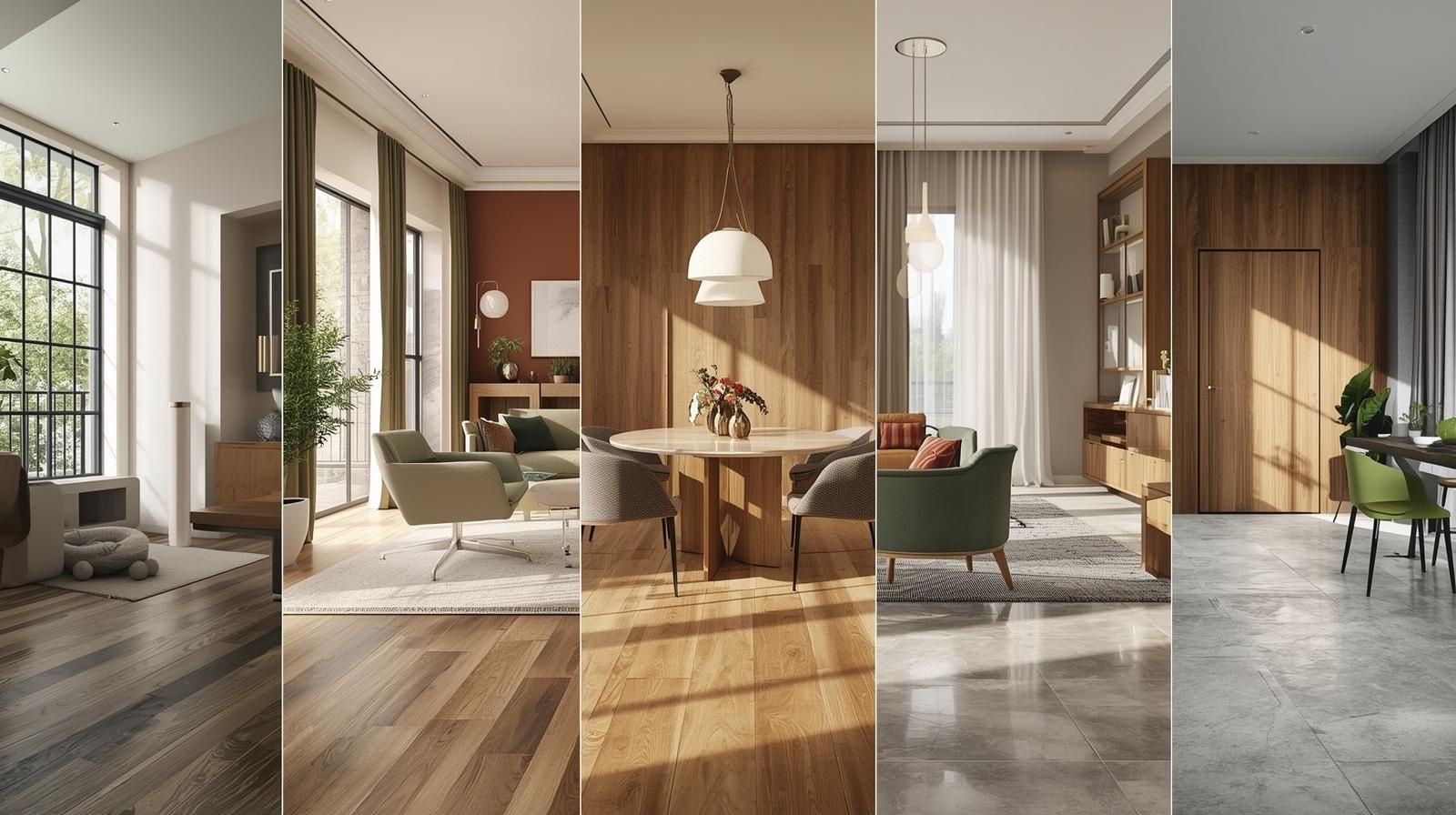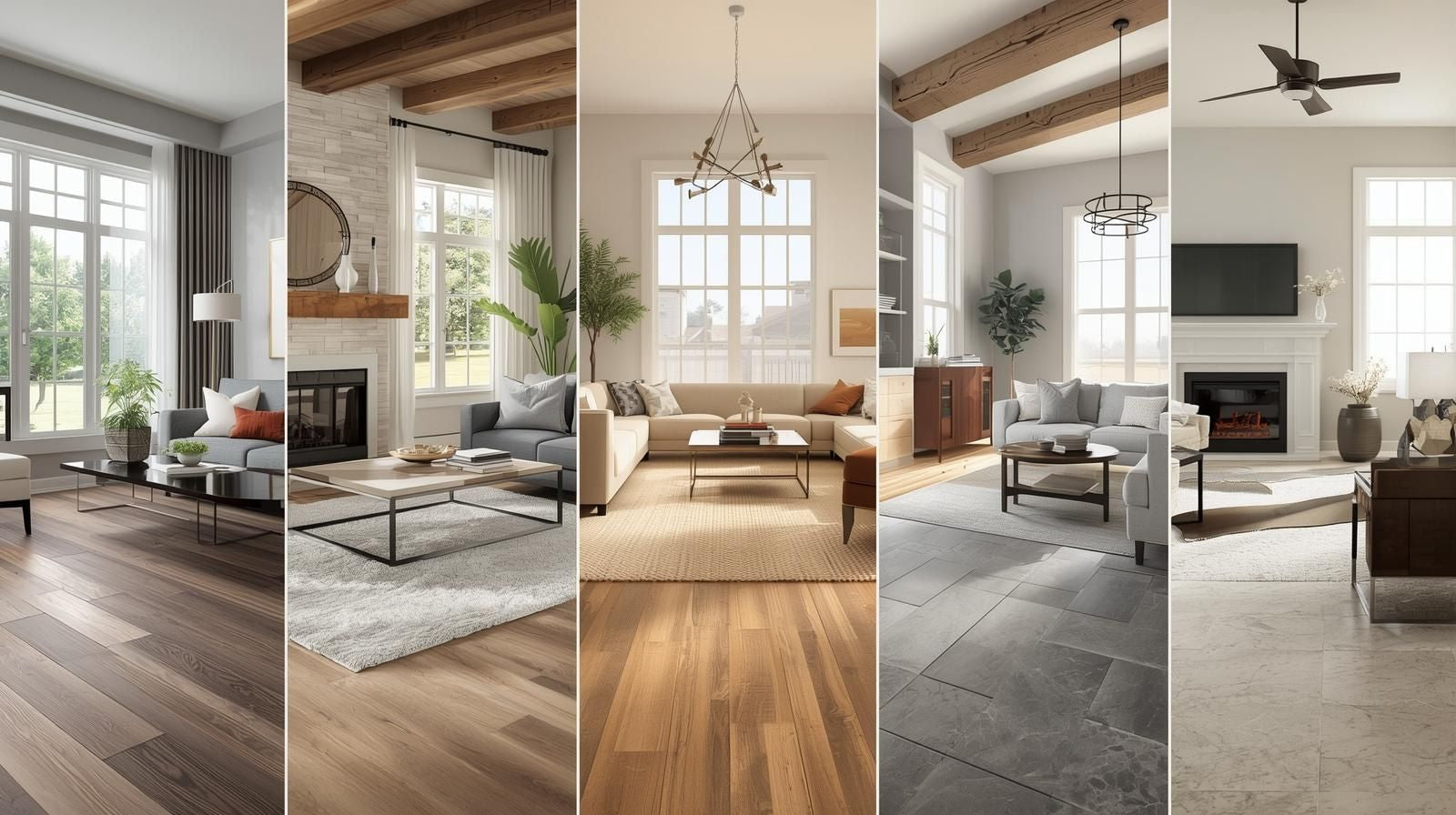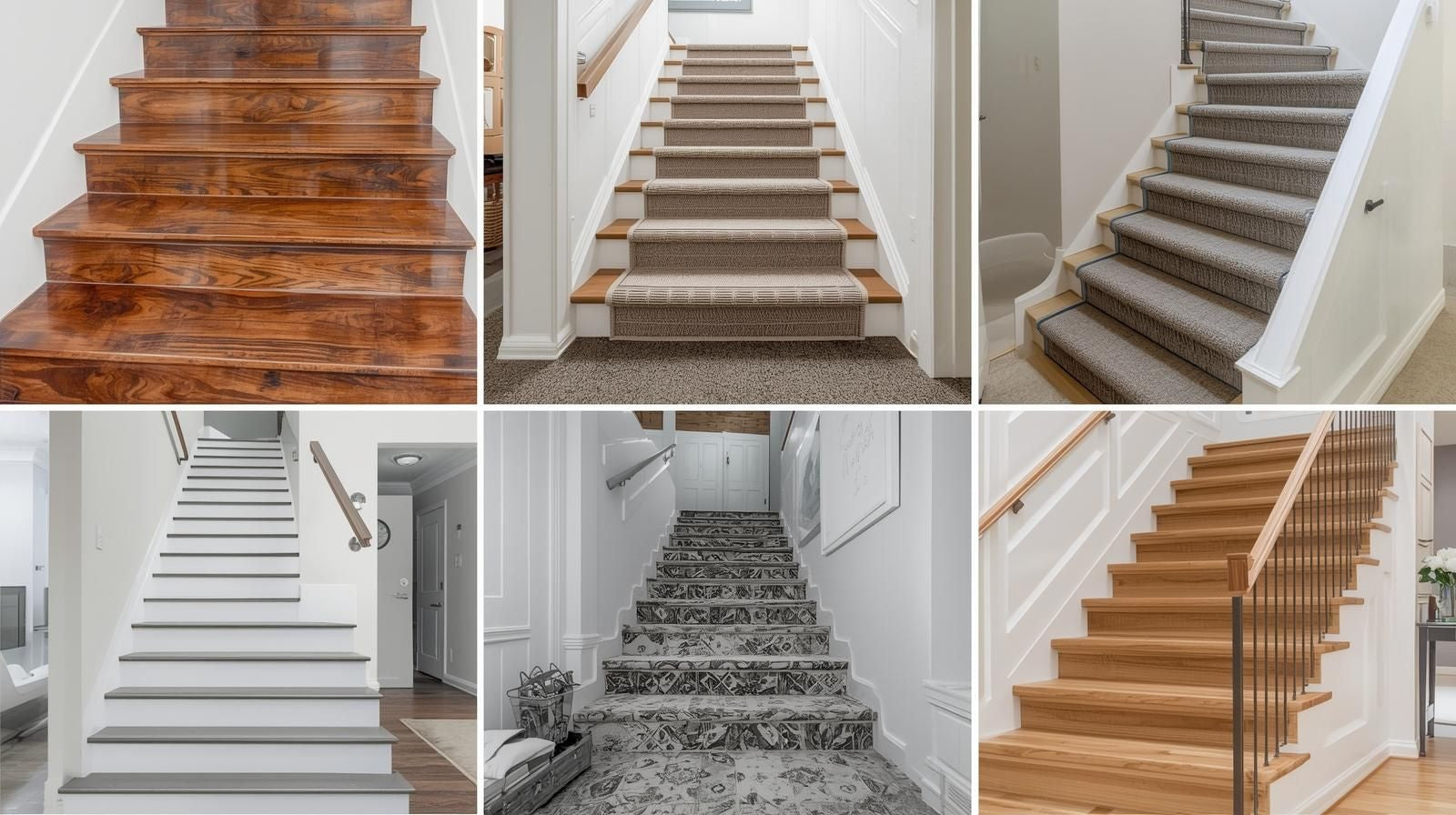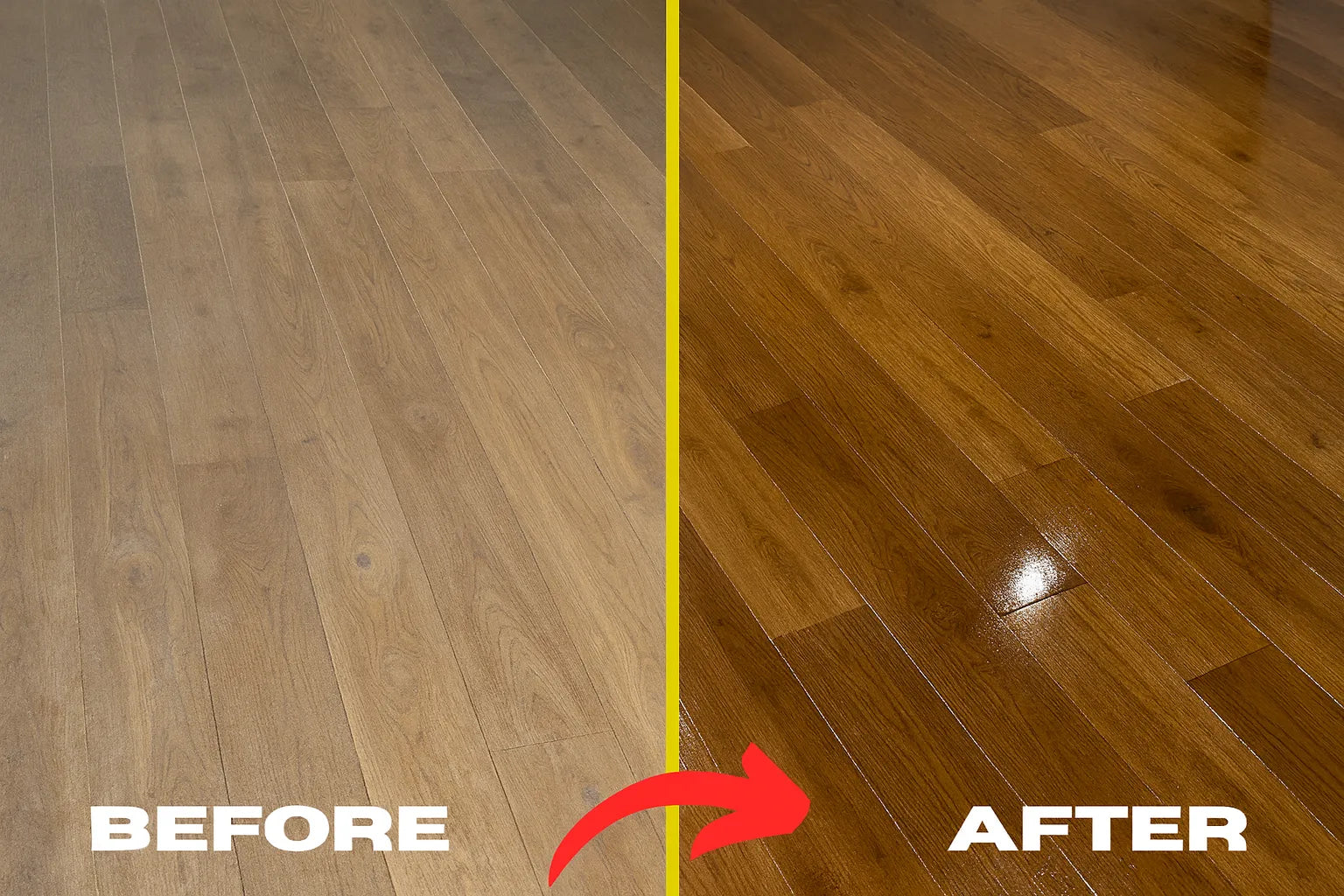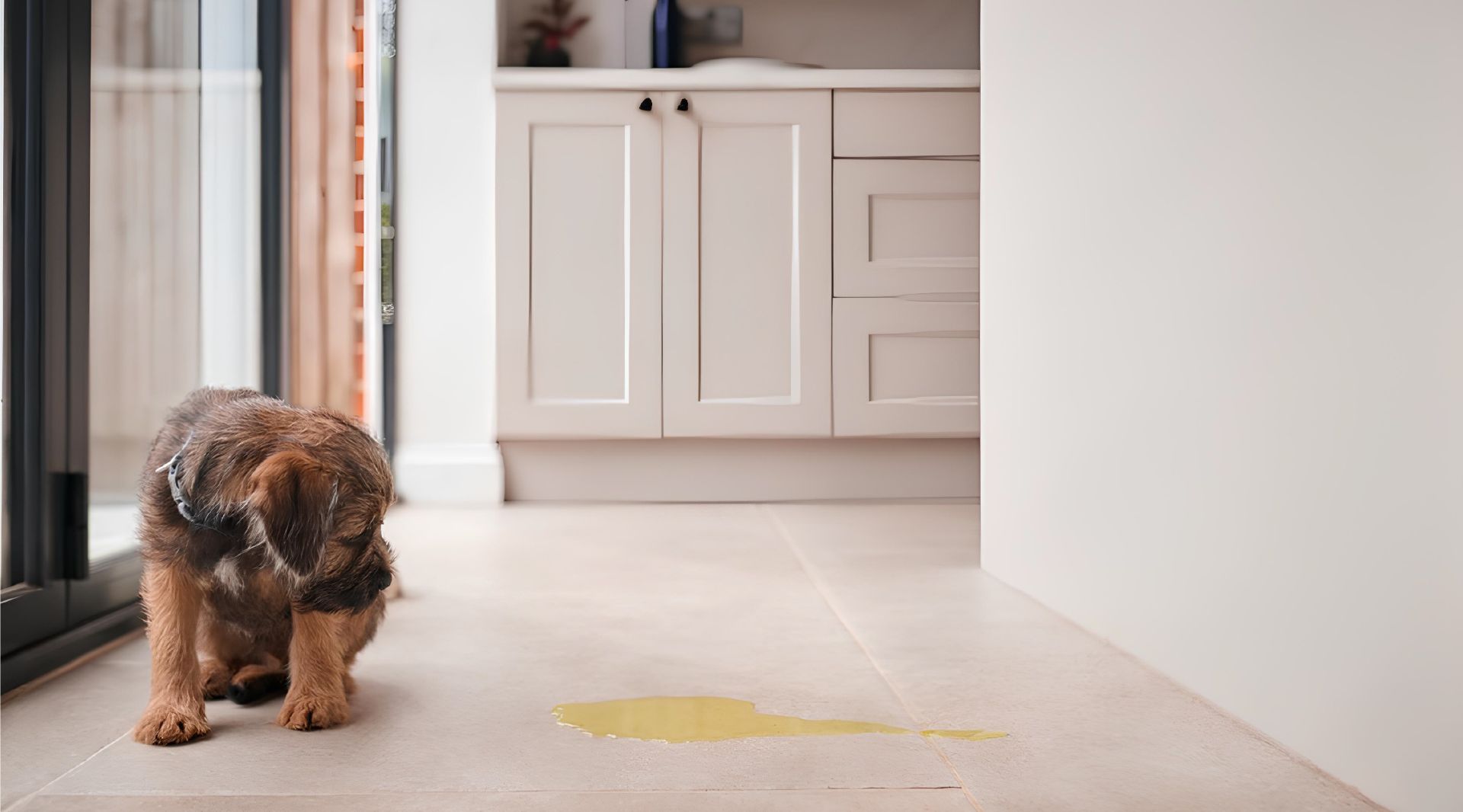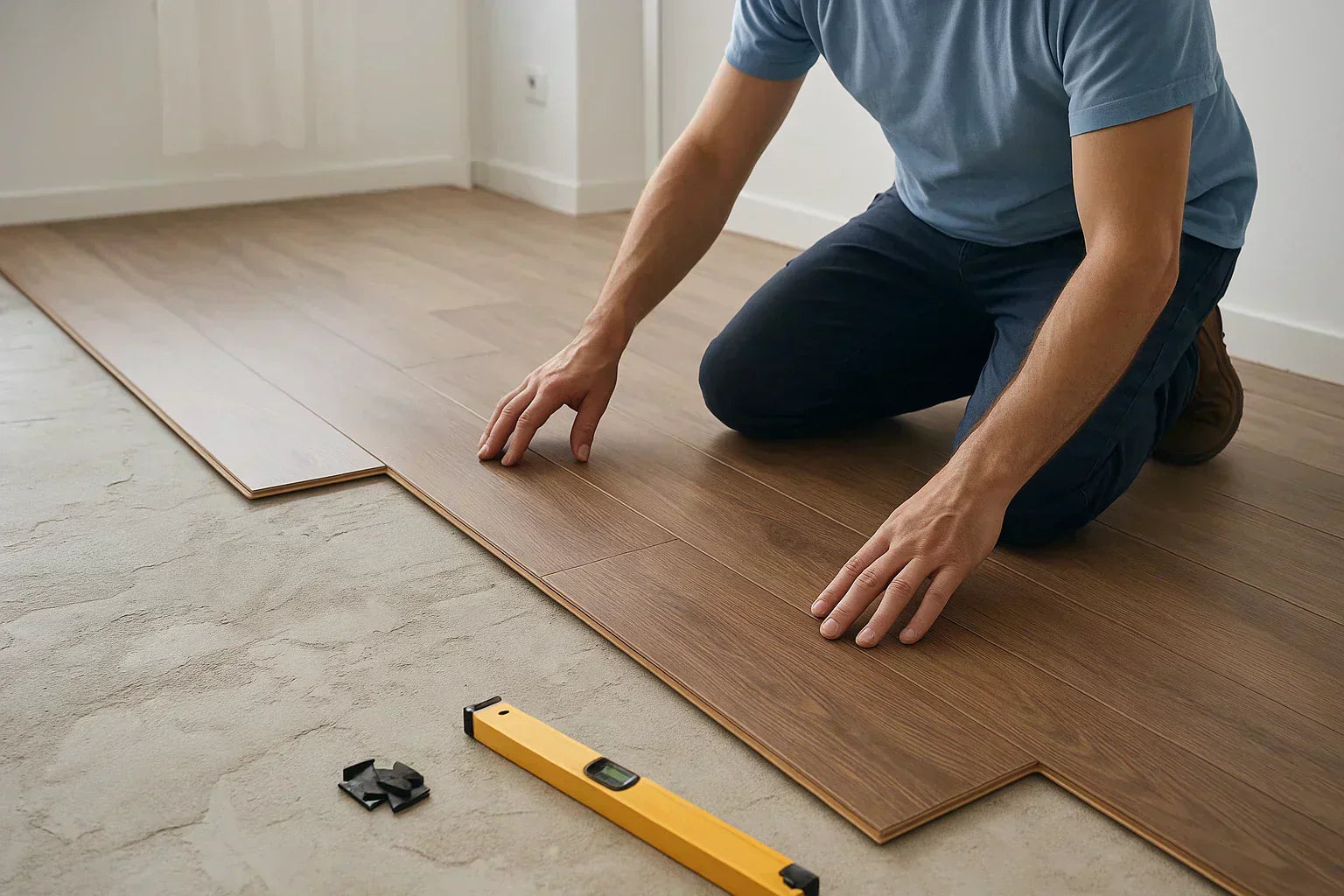Flooring is one of those home improvement decisions that feels exciting but intimidating. It’s the foundation of your home’s style, yet it can also consume a big chunk of your renovation budget. Here’s the good news: 2025 brings plenty of the cheapest flooring options that don’t force you to sacrifice beauty, durability, or comfort.
Forget the days when “budget-friendly flooring” meant dull, flimsy, or outdated looks. NOW, you can find inexpensive flooring options that mimic hardwood, stone, or tile, without the jaw-dropping price tag. Refreshing a rental property, upgrading your first home, or updating one room at a time, there’s an affordable flooring option that matches your budget and lifestyle.
And if you’re serious about saving? As an experienced wholesale flooring supplier, Royal Floors Online provides affordable flooring at bulk prices, making budget renovations even more manageable.
1. Vinyl Sheet Flooring

- Average Cost per sq ft.: Materials ~$1.00-$2.00; installation ~$3.00-$7.00 depending on labour and prep.
- Main Highlight: Waterproof, Extremely Cost-Effective
- Best use cases: Large wet rooms (bathrooms, laundry), basements, kitchens, places where moisture or spills happen, and budget renovations.
Vinyl sheet flooring, a type of waterproof vinyl flooring, is one continuous sheet (or large roll sections) of vinyl with PVC and other additives that you cut to fit the room. Because it’s one big piece, seams are fewer, which helps against water penetration. The sheet comes in many styles: plain colours, wood‐look, stone‐look, and patterned. Thickness varies, plus backing layers/quilting/foam underlayment sometimes included.
From my experience, I can say that the key to success with vinyl sheet is subfloor preparation. If you skip proper leveling, every bump or dip will show. I’ve seen homeowners regret DIY jobs when small imperfections ruined the look. My tip: invest time in prep work or hire a professional installer.
This flooring is highly water-resistant (one of the best among cheap floorings) and easy to clean. Spills wipe off easily, with no grout to worry about. It’s generally more comfortable and has fewer joints, so seams require less maintenance. Also, it's affordable upfront, making it suitable for tight budgets.
On the downside, vinyl floors from low-quality brands can dent or tear if heavy furniture moves; sharp objects can gouge it. Also, it may fade over time in sun-exposed areas.
2. Laminate Flooring

-
Average Cost per sq ft.: Materials ~$1.00-$4.50; installed adds ~$2.00-$8.00 extra in many cases.
- Main Highlight: Hardwood Look at a Fraction of the Cost
- Best use cases: Living rooms, bedrooms, hallways; areas where you want wood look but don’t want the real-wood price or maintenance.
Laminate flooring is multiple layers: a base core (often high-density fiberboard or similar), then a photographic layer with a wood or stone image, topped with a wear layer (protective clear coating). It tends to mimic hardwood or stone decently well, especially at mid or higher quality levels.
Many laminate flooring brands offer click-lock style, floating floor installations: meaning you don’t glue; boards interlock and “float” over underlayment, which speeds up installation and reduces cost. But moisture can cause significant damage: laminate doesn’t like standing water. Even good water-resistant versions are only so good.
Very affordable waterproof laminate floors suit different spaces of your home, they gives a wood-look, scratch resistance better than cheaper floors, decent lifespan if taken care of, and many options of styles. It’s pretty easy to install; many DIYers do it, saving labor. Low maintenance: sweep, mop lightly, avoid heavy water.
But I always warn clients: laminate and water don’t mix. Even “water-resistant” options can warp if moisture seeps in. For dry spaces, laminate is a great long-term, stylish option that won’t drain your budget.
3. Peel-and-Stick Vinyl Tiles

-
Average Cost per sq ft.: ~$1.00-$5.00 depending on quality; material cost is low, installation often DIY, so labour is very small.
- Main Highlight: Easy DIY, Very Inexpensive
- Best use cases: Small updates, rentals, kitchens, perhaps bathrooms (if moderate moisture), closets, temporary / budget makeovers.
Peel-and-stick vinyl tiles are individual tiles (or planks) with adhesive backing; you peel off the liner and stick them down. They come in many styles: wood look, tile look, geometric patterns, colours, etc. Thickness varies.
Some have extra backing, a wear layer. Because they are modular, you can replace individual pieces if damaged rather than the whole floor. Prep is important: subfloor must be flat, clean, dry; if not, tiles may bubble or edges lift.
Highly affordable, very low labor if you do it yourself; quick install; minimal mess; decent water resistance if seams are sealed well; great for renters, temporary or semi-permanent solutions; a lot of design flexibility. I always tell homeowners to clean, smooth, and dry the surface thoroughly before installation.
I have heard reviews from clients that it is less durable overall, adhesive may fail, tiles can curl or lift, especially around edges or in moist/humid areas.
4. Engineered Wood (Budget Grades)

-
Average Cost per sq ft.: Materials ~$4.00-$12.00; installed adds $3.00-$10.00 labour; overall mid range usually ~$6-$12 per sq.ft.
- Main Highlight: Real Wood Look
- Best use cases: Living/dining rooms, bedrooms, areas with moderate traffic; places where you want a real wood appearance but need more stability and lower cost than solid hardwood.
Engineered hardwood flooring is made from a real hardwood veneer layer bonded onto layers of plywood or fiberboard core. The veneer gives the look and feel of solid wood, while the core layers give stability.
Budget grades have a thinner veneer, fewer finish coats, less exotic species of wood, narrower planks, etc. Installation can be floating, glue-down, or nail-down, depending on the product and subfloor. You will not get as many refinishes as solid wood, especially with very thin veneer, but still more than laminate.
You get the real wood appearance and feel, some possibility of refinishing if the veneer is thick enough; more stable and less prone to warping than solid hardwood in many conditions; better value for wood aesthetic than solid wood; adds resale value in many markets, and brings natural warmth.
But the wood is still vulnerable to moisture, so basements/kitchens need care; scratches and dents are more visible than synthetic floors; maintenance is more demanding. I usually recommend engineered wood for living rooms, bedrooms, and dining areas where moisture is less of a concern.
5. Carpet (Rolls or Tiles)

- Average Cost per sq ft.: Rolls (“broadloom”) often $0.65-$2.50 materials low end; with installation, costs may range $3–$11 including carpet and padding. Carpet tiles usually cost $2.50–$11+, depending on quality
- Main Highlight: Cozy, soft, and one of the most affordable flooring options
- Best use cases: Bedrooms, living rooms, basements (if dry), rentals, spaces where comfort, warmth, and softness are valued.
Carpet comes in two main formats: rolls (“broadloom”), which cover large areas, and tiles (carpet squares), which are modular. Rolls give a seamless, uniform look; tiles offer flexibility (you can replace sections) and easier installation. Carpets have pile type (low, medium, high), fibre types (nylon, polyester, olefin, etc.), backing, cushion, or pad.
Tiles often come with peel-and-stick or glue-down. Carpet adds warmth, reduces noise, is soft underfoot, and is good for insulation. But maintenance (vacuuming, stain removal) is required, and replacement is more frequent.
I usually recommend carpet for bedrooms, family rooms, or rentals where softness underfoot matters more than water resistance. It offers many color/pile/texture options; noise reduction.
While stains are hard to remove, carpet wears down in high traffic, needs frequent cleaning (vacuum, deep cleaning), holds allergens, and is not good in moist or wet rooms.
6. Ceramic Tile (Economy Choices)

-
Average Cost per sq ft.: Materials $0.50-$7.00 for ceramic; labour adds $4-$14 or more depending on size/complexity, so installed may be $4-$15+ depending.
- Main Highlight: Long-lasting and water-resistant
- Best use cases: Bathrooms, kitchens, entryways, laundry rooms, anywhere moisture & heavy wear are expected.
Ceramic tile is baked clay tile glazed (usually) to protect against water/stains. Sizes vary, shapes vary. Lower‐end tiles may have simple glaze, less precise cuts; high-end tiles have better finish, rectified edges, better slip resistance, etc.
Tile flooring needs mortar (thinset), grout, and sealant in some cases. Subfloor prep is heavy: must be level, stable. Installation is more labor-intensive. But once well done, ceramic tile lasts decades if cared for, is resistant to water, stains, and scratching (depending on glaze and hardness), and is easy to clean.
Extremely durable, long life if installed well; excellent water resistance; great for wet zones; huge variety of styles, colors, shapes; easy cleaning; doesn’t show wear in the same way as carpet or wood.
The installation labor is heavy (costly, time-consuming); cold and hard underfoot; grout requires maintenance such as staining, cleaning, and re-sealing.
7. Polished or Sealed Concrete

- Average Cost per sq ft.: If existing concrete slab usable: polishing/sealing may be $0.50-$2.00 material & labour for simple work; more for decorative/highly polished finishes.
- Main Highlight: Minimalist & Highly Inexpensive
- Best use for: Basements, garages, lofts, industrial style living spaces, modern minimalist interiors, large open areas where the floor is already concrete.
Concrete flooring means using the structural slab itself as the finished floor: polish it (grind down, buff, seal) or seal it (coat with sealant) to improve appearance and protect. You can add stains, dyes, aggregate, epoxy, or overlays, etc, but those add cost.
If the concrete slab is flat, crack‐free, level, and well-drained, then polished or sealed concrete is surprisingly cheap and durable. Because there is no additional flooring material, much of the cost is labour and finishing.
Super durable, almost no ongoing replacement cost; minimal maintenance (sweeping, occasional sealing); modern industrial look; very water resistant; if a slab exists, significant savings; good for high traffic, loads.
While it feels hard underfoot, cold, cracks may show up or expand; polishing cost goes up quickly for high gloss or custom stain, or fancy designs.
Quick Comparison Table of Cheap Flooring Options
| Flooring Type | Price Range (per sq ft.) | Durability | Water Resistance | Best for Rooms |
| Vinyl Sheet Flooring | $0.50 – $2.50 | Moderate | High | Kitchen, bath, basement |
| Laminate Flooring | $1 – $3 | High | Low | Living, bedroom, hallway |
| Peel-and-Stick Vinyl | $0.30 – $1.50 | Low-Moderate | Moderate | Kitchen, rentals, small |
| Engineered Wood | $2 – $5 | Moderate | Low | Living, dining, bedroom |
| Carpet Rolls/Tiles | $1 – $4 | Low-Moderate | Low | Bedroom, basement, rentals |
| Ceramic Tile | $1 – $5 | High | High | Kitchen, bath, laundry |
| Polished Concrete | $0.50 – $2 | Very High | Moderate | Basement, loft, garage |
Factors to Consider Before Choosing Inexpensive Flooring
When picking the cheapest flooring options, keep these factors in mind:
- What should I consider about Room Usage? High-traffic areas need durability (laminate, ceramic). Bedrooms can prioritize comfort (carpet).
- How long do I want this floor to last? Cheaper floors might save you money now, but cost more in upkeep if they wear out fast; ask yourself: do you want a five-year patch or a floor lasting 15–20 years?
- Is water resistance a must for your space? If the flooring will be exposed to moisture, such as in bathrooms, kitchens, or basements, choose waterproof or highly water-resistant options to avoid warping, mold, or damage.
- How much will installation add to the total cost? DIY-friendly options like peel-and-stick vinyl save money upfront.
- How does your lifestyle affect what flooring you need? Families with kids or pets may need scratch resistance.
FAQs
What is the cheapest flooring option for basements?
Polished concrete or vinyl sheet flooring is the best affordable option. They are inexpensive, water-resistant options for basements.
What are the cheapest flooring options for kitchens?
Vinyl sheet flooring and peel-and-stick vinyl tiles are cost-effective and water-friendly choices.
What are the cheapest flooring options for living rooms?
Laminate flooring and carpet rolls give you comfort and style at a budget price.
Is the cheapest flooring worth it?
Sometimes the cheapest flooring is worth it, if your budget is tight and the room’s demands are modest. But often, you trade off durability, appearance, comfort, or long-term cost; low-cost flooring may need replacement sooner, costing more over time.
Conclusion
The most affordable flooring choices of 2025 don’t necessarily denote sacrifice in style, resilience, or comfort. From vinyl sheet to hardwood and tile, today’s affordable flooring offers a wide range of options for homeowners who need new floors but are not interested in breaking the bank.
Take a long, hard look at your lifestyle, the room’s requirements, and your future plans. Choosing the right one will save you money, headaches, and brighten your days with quality underfoot.
Are you all set to save money on your next flooring job? Discover wholesale savings at Royal Floors Online now. Call (833) 378-4559 for expert advice.


